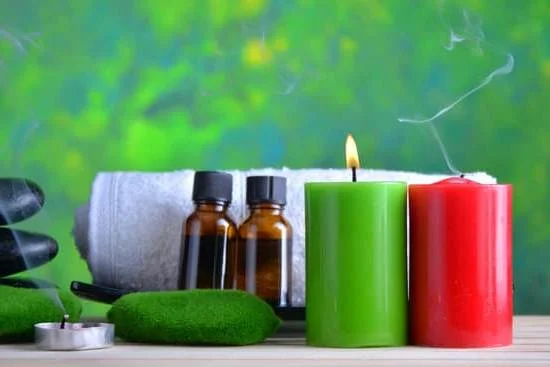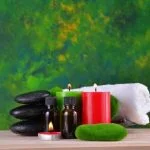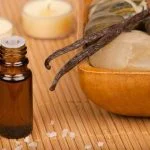Aromatherapy has gained significant popularity in recent years as people seek alternative methods to promote their overall well-being. This ancient practice utilizes essential oils and other aromatic compounds to enhance physical and mental health. But how much does aromatherapy cost? In this article, we will delve into the world of aromatherapy, exploring its benefits, different types of products available, and the factors that influence its cost.
Aromatherapy is a holistic healing technique that dates back centuries. It involves the use of essential oils extracted from plants to stimulate the senses and promote relaxation, rejuvenation, and balance within the body. These oils can be inhaled or applied topically, allowing their scent molecules to interact with the limbic system in our brains and trigger various physiological responses.
The rising popularity of aromatherapy can be attributed to its potential benefits for both physical and mental health. Many individuals turn to it as a natural remedy for stress relief, sleep enhancement, pain management, immune support, mood elevation, and more. With its non-invasive nature and minimal side effects when used correctly, aromatherapy offers a versatile approach to improving overall well-being.
The benefits of aromatherapy
Aromatherapy has gained popularity in recent years due to its numerous physical and mental benefits. Using essential oils and aromatherapy techniques can have a positive impact on overall well-being, providing relief from various ailments and promoting relaxation.
Physical Benefits
One of the main advantages of aromatherapy is its ability to provide physical relief. Essential oils have properties that can soothe and alleviate symptoms associated with headaches, muscle pain, sinus congestion, and digestive issues. For example, peppermint oil is known for its analgesic properties and can help relieve muscle pain when applied topically or inhaled.
Eucalyptus oil is effective in clearing nasal congestion when used in a diffuser or added to a steam inhalation routine. Aromatherapy massage oils can also aid in reducing inflammation and promoting healthy circulation.
Mental Benefits
In addition to the physical benefits, aromatherapy can also have a positive impact on mental health. Many essential oils have calming and mood-enhancing properties that can help reduce stress, anxiety, and depression. Lavender oil is widely used for its relaxing effects and can promote better sleep quality when diffused before bedtime or added to bathwater. Citrus oils like bergamot and lemon are known for their uplifting qualities, helping to improve mood and increase energy levels.
Other Advantages
Aromatherapy can also support overall well-being by boosting the immune system, improving concentration and focus, as well as enhancing skin health. Some essential oils have antimicrobial properties that can help prevent the spread of germs during cold seasons or reduce the duration of illness.
Certain scents like rosemary or lemon can improve cognitive performance and increase alertness when used during study sessions or work tasks. Additionally, when incorporated into skincare routines, specific essential oils such as tea tree or lavender oil can promote healthy skin by reducing inflammation and calming skin conditions like acne or eczema.
Different types of aromatherapy products
Aromatherapy offers a wide range of products that can be used to enhance physical and mental well-being. Understanding the different options available is essential for those interested in incorporating aromatherapy into their daily routine. This section provides a comprehensive overview of the various types of aromatherapy products, including essential oils, diffusers, candles, and massage oils.
Essential Oils
Essential oils are at the core of aromatherapy. These concentrated plant extracts offer a variety of therapeutic benefits. There are numerous types of essential oils available, each with its unique properties and aroma.
Some popular options include lavender for relaxation, peppermint for invigoration, and eucalyptus for respiratory support. Essential oils can be used in various ways such as inhalation, topical application, and even ingestion (though caution is advised). Prices for individual essential oils can vary significantly depending on factors such as rarity, sourcing methods, and quality.
Diffusers
Diffusers are devices designed to disperse essential oil molecules into the air to create a pleasant and therapeutic environment. There are several types of diffusers available on the market, including ultrasonic diffusers, nebulizing diffusers, heat diffusers, and evaporative diffusers. Prices for diffusers can range from affordable options to more high-end models with advanced features like timer settings or LED lighting.
Candles
Aromatherapy candles are another popular choice for introducing scent into the atmosphere. These candles are usually made with natural waxes infused with essential oils or fragrance blends. They not only provide a soothing aroma but also create a relaxing ambiance with their soft glow. Depending on factors such as brand reputation and ingredients used, prices for aromatherapy candles can vary.
Massage Oils
Aromatherapy massage oils combine the benefits of touch therapy with the therapeutic properties of essential oils. These oils are specifically formulated to provide lubrication for massage while also delivering the aromatic benefits of essential oils through skin absorption and inhalation. Prices for massage oils can vary based on factors such as the quality of ingredients used, whether they are organic or synthetic, and the reputation of the brand.
By exploring and understanding the different types of aromatherapy products available, individuals can make informed decisions regarding which options best suit their needs and preferences. It is important to consider factors such as personal scent preference, intended use, and budget when selecting aromatherapy products.
Factors influencing the cost of aromatherapy
Factors influencing the cost of aromatherapy can vary depending on several variables. One important factor is the quality of essential oils used. High-quality, organic essential oils tend to be more expensive compared to synthetic or lower-grade options. This is because the production and extraction process of pure essential oils requires meticulous care, ensuring that they maintain their therapeutic properties.
Another factor that affects the cost of aromatherapy is the brand. Well-known brands that have established a reputation for producing high-quality products often come with a higher price tag. However, it’s important to note that not all expensive brands guarantee superior quality, so it’s necessary to do thorough research before making a purchase.
The method of application can also impact the cost of aromatherapy. Different products and techniques require different tools and accessories. For example, using an essential oil diffuser may require purchasing the device itself along with additional accessories such as diffuser pads or reeds. On the other hand, simple applications like adding a few drops of essential oil into a bath or onto a tissue are more affordable options.
Overall, while certain factors like quality, brand, and method of application can contribute to higher costs in aromatherapy, it’s crucial to keep in mind that there are also budget-friendly alternatives available without compromising on the benefits. By being knowledgeable about these factors, individuals can make informed decisions based on their preferences and financial capabilities when incorporating aromatherapy into their daily routine.
Cost breakdown
Cost breakdown: Analyzing the average prices of popular aromatherapy products and services, including individual essential oils, starter kits, diffusers, and professional aromatherapy sessions.
When it comes to the cost of aromatherapy, it is important to consider the different products and services available. Here is a breakdown of the average prices for popular aromatherapy items:
- Individual essential oils: Essential oils are the backbone of aromatherapy and can range in price depending on factors such as quality and rarity. On average, individual essential oils can cost anywhere from $5 to $20 per bottle.
- Starter kits: For those new to aromatherapy, starter kits are a great way to get started with a variety of essential oils at a more affordable price. These kits typically include a selection of commonly used oils and can range from $20 to $50.
- Diffusers: Aromatherapy diffusers are used to disperse essential oil particles into the air for inhalation. The cost of diffusers varies depending on their size, features, and brand. Basic models start at around $20, while more advanced options with additional functionalities can go up to $100 or more.
- Professional aromatherapy sessions: For individuals seeking a more personalized and therapeutic experience, professional aromatherapy sessions are available. These sessions often involve consultations with trained practitioners who create custom blends tailored to specific needs. Prices for professional sessions vary depending on factors such as location and duration but typically range from $50 to $150 per session.
In addition to these items, there may be other costs associated with aromatherapy such as carrier oils, candles, massage oils, and accessories like roller bottles or storage cases. It’s important to consider these potential additional expenses when planning for your own aromatherapy practice.
| Product/Service | Average Price Range |
|---|---|
| Individual Essential Oils | $5 – $20 per bottle |
| Starter Kits | $20 – $50 |
| Diffusers | $20 – $100+ |
| Professional Aromatherapy Sessions | $50 – $150 per session |
It’s important to note that these are average price ranges and individual prices may vary depending on factors such as brand, quality, and location. When considering the cost of aromatherapy, it is also essential to remember that the benefits gained from this practice can outweigh the initial investment.
Saving money on aromatherapy
For those on a budget, there are several ways to save money on aromatherapy products and services without compromising on quality. Here are some practical tips and tricks to help you make the most of your aromatherapy experience while keeping costs down:
- Explore affordable essential oil options: Essential oils can vary significantly in price, so it’s important to research and compare different brands before making a purchase. Look for reputable brands that offer good quality oils at reasonable prices. Additionally, consider opting for less expensive essential oils such as lavender, lemon, or tea tree, which tend to be more affordable compared to rare or exotic oils.
- Make your own blends: Instead of buying pre-mixed blends, try creating your own personalized aroma blends at home. It not only allows you to save money but also gives you the freedom to experiment with different scents and customizations. Purchase a few basic essential oils that you enjoy and blend them together in a roller bottle or diffuser according to your preferences.
- DIY home spa experiences: Transforming your space into a relaxing oasis doesn’t have to cost a fortune. Create a tranquil atmosphere by using inexpensive methods such as filling a bowl with water and adding a few drops of essential oil for a homemade room diffuser or lighting scented candles during your self-care routine. You can also enhance your bath experience by adding a few drops of essential oil into warm bathwater.
- Look for discounts and promotions: Keep an eye out for sales, promotions, and discounts offered by aromatherapy brands or retailers. Many companies offer seasonal or holiday discounts that can significantly reduce the cost of essential oils or other aromatherapy products. Signing up for newsletters or following social media pages of these companies can ensure you stay updated about any special offers.
- Extend the life of your products: To get the most out of your aromatherapy products, take steps to extend their lifespan. Store essential oils in a cool, dark place to maintain their potency and prevent them from going rancid. Use only as much oil as you need, as using excessive amounts can lead to waste. Additionally, clean and care for your diffusers or other aromatherapy devices regularly to ensure they continue working effectively.
By following these practical tips and tricks, you can enjoy the benefits of aromatherapy without straining your budget. Remember that affordability doesn’t mean compromising on quality; with a little research and creativity, you can create a fulfilling aromatherapy experience while saving money along the way.
DIY aromatherapy
While purchasing pre-made aromatherapy products may be convenient, DIY aromatherapy offers a cost-effective alternative that allows individuals to customize their blends, create homemade diffusers, and enjoy spa-like experiences in the comfort of their own home. Not only can this option save money, but it also provides an opportunity for creativity and personalization.
Creating your own essential oil blends is a major advantage of DIY aromatherapy. By choosing individual oils and combining them according to your preferences or specific needs, you have full control over the scent and therapeutic properties of your blend. Whether you want to create a calming blend for relaxation or an energizing blend for focus, there are countless recipes available online or in aromatherapy books to guide you.
In addition to creating blends, making homemade diffusers is another cost-effective way to enjoy aromatherapy at home. Traditional diffusers can be expensive, but there are various DIY options that require minimal materials and effort. One popular method involves using reed sticks placed in a bottle filled with a carrier oil mixed with essential oils.
The reeds absorb the oil mixture and gradually release the scent into the room. This allows you to enjoy the benefits of aromatherapy without spending money on expensive diffuser devices.
To enhance the spa-like experience at home, there are several affordable options available. Creating a relaxing ambiance can be as simple as lighting scented candles or using essential oils in a warm bath. You can also experiment with other DIY spa treatments such as face masks, body scrubs, and foot soaks using essential oils. These homemade treatments not only provide a luxurious experience but also allow you to tailor them to suit your skin type or personal preferences.
Aromatherapy on a larger scale
Spas, wellness centers, and hotels are increasingly recognizing the benefits of integrating aromatherapy into their services and facilities. By creating a soothing and relaxing environment for their guests, these businesses aim to enhance their overall experience and promote physical and mental well-being. However, implementing aromatherapy on a larger scale can come with its own set of costs.
When it comes to incorporating aromatherapy into businesses, the cost can vary depending on the extent of the integration. The expenses may include purchasing essential oils in bulk, investing in diffusers or other scent delivery systems, training staff members in aromatherapy techniques, and maintaining an adequate inventory of aromatherapy products.
| Business Type | Potential Aromatherapy Costs |
|---|---|
| Spa | – Essential oils: $500 – $1,000 per month
|
| Wellness Center | – Essential oils: $300 – $800 per month
|
| Hotel | – Essential oils for room fragrances: $150 – $400 per month
|
It’s important for businesses to consider the investment in aromatherapy as a way to enhance their overall customer experience and differentiate themselves from competitors. However, it is also necessary to carefully evaluate the costs and potential return on investment.
Integrating aromatherapy into businesses can have a positive impact on customer satisfaction and brand reputation. By creating a sensory experience that promotes relaxation and well-being, spas, wellness centers, and hotels can attract more customers and generate repeat business. Additionally, incorporating aromatherapy may also lead to increased revenue through the sale of aromatherapy products or premium services.
Overall, integrating aromatherapy into businesses requires careful planning and budgeting. While there are costs involved in implementing and maintaining an aromatherapy program, the potential benefits can make it a worthwhile investment for those in the wellness industry. Finding the right balance between quality products/services and affordability is essential for businesses looking to leverage the power of aromatherapy.
Conclusion
In conclusion, the cost of aromatherapy can vary depending on several factors such as the quality of essential oils, brand reputation, and the method of application. While some aromatherapy products and services may seem expensive at first glance, it is important to consider the numerous physical and mental benefits that can be derived from this practice.
When budgeting for aromatherapy, it is crucial to find a balance between quality and affordability. Investing in high-quality essential oils and products may be more expensive initially, but they often provide better results and last longer in the long run. However, those on a stricter budget can still enjoy the benefits of aromatherapy by exploring cost-effective alternatives such as creating their own blends or homemade diffusers.
Furthermore, businesses such as spas, wellness centers, and hotels also integrate aromatherapy into their offerings. The cost of implementing aromatherapy on a larger scale depends on factors such as the size of the establishment, the selection of essential oils offered, and any additional services provided. It is important for businesses to carefully consider these costs alongside potential benefits to ensure that incorporating aromatherapy aligns with their overall goals.
In summary, while the cost of aromatherapy can vary depending on individual preferences and circumstances, it is possible to find a balance between quality and affordability for one’s specific needs. Whether enjoying aromatherapy at home or integrating it into a business setting, prioritizing high-quality products and services that align with individual preferences can ensure an optimal experience without breaking the bank.
Frequently Asked Questions
Is aromatherapy cost effective?
Aromatherapy can be considered cost-effective when compared to other alternative therapies or medical treatments. While the initial investment in essential oils and diffusers may seem expensive, these products tend to last a long time, as only a few drops are needed per use.
Additionally, aromatherapy can often replace costly medications or treatments for common ailments such as headaches, stress, or insomnia. Moreover, practicing self-care through aromatherapy may potentially prevent more serious health issues in the long run, which could save on healthcare costs.
Why is aromatherapy expensive?
There are several factors that contribute to the higher cost of aromatherapy products. Firstly, essential oils are typically extracted from large quantities of plant material to obtain a relatively small amount of oil, making the production process labor-intensive and time-consuming.
Quality control is also crucial in ensuring pure and potent oils, which involves careful cultivation, harvesting, distillation processes, and testing for purity. Furthermore, supply and demand dynamics influence prices – some essential oils come from plants that are rare or grow in specific regions, making them more expensive due to limited availability.
How much does it cost to produce essential oils?
The cost of producing essential oils varies depending on multiple factors such as the type of plant being used and its yield of oil per unit harvested. Some plants produce very small amounts of oil and require large quantities of raw materials for extraction, driving up production costs. The cultivation process itself also incurs expenses like land use, farming practices (i.e., organic or conventional), maintenance of plants (pruning/grafting), and pest/disease management measures.
Additionally, distillation methods play a role – steam distillation is commonly used but requires equipment investment and energy consumption during the process. All these factors contribute to the overall cost involved in producing essential oils.

Are you looking for a natural way to improve your health and wellbeing?
If so, aromatherapy may be the answer for you.





